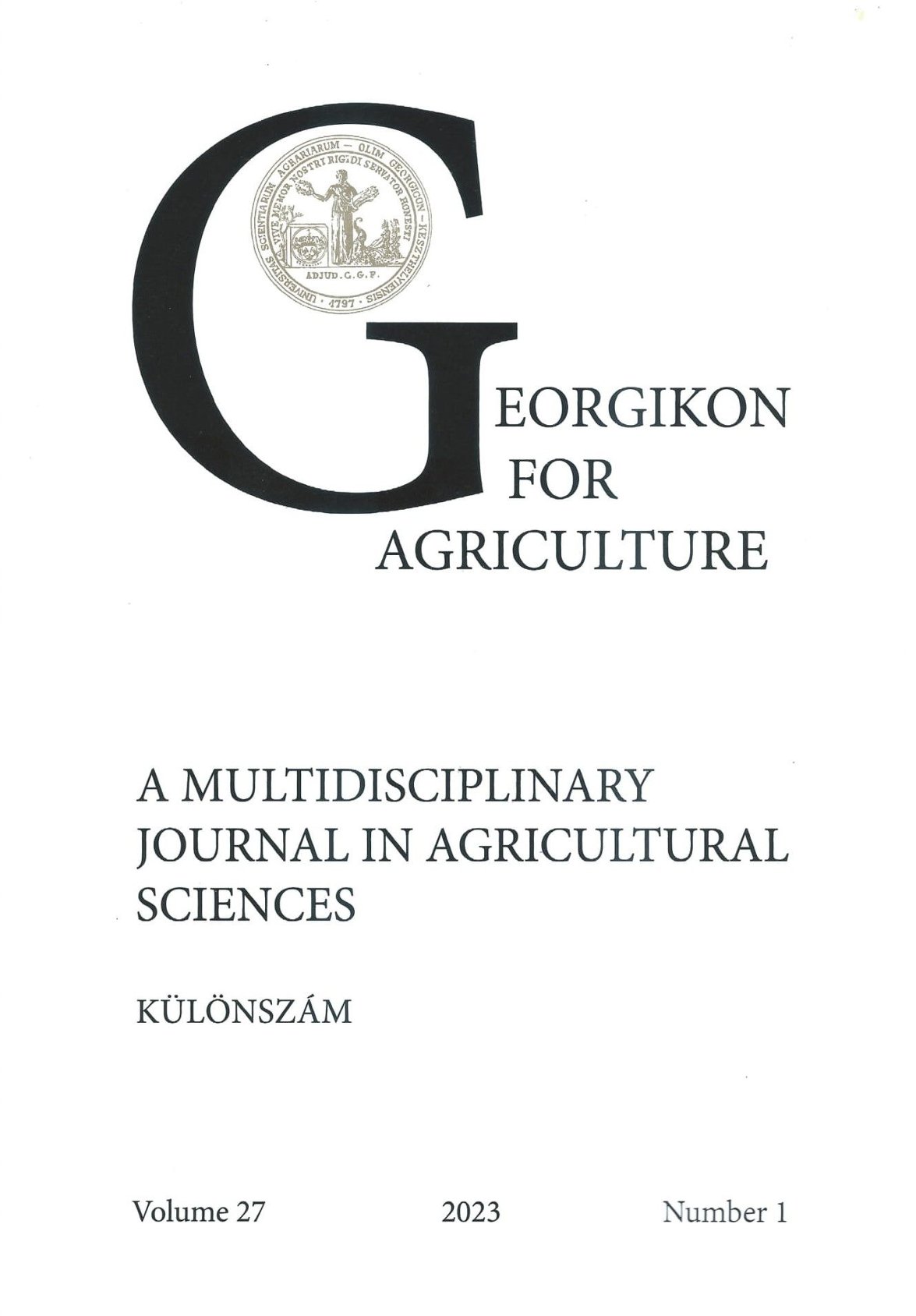Az ózon hatása a Fuzárium fertőzöttség alakulására
Keywords:
wheat, ozone, Alternaria spp., Fusarium spp.Abstract
We investigated the effect of ozone gas on Fusarium spp. infection of seeds, and we also evaluated the Fusarium infection data of the last 5 years at the Plant and Soil Protection Department of the Vas County Government Office. We did not establish any correlation between the Fusarium infection and precipitation. In the case of monocot pre-crops, we experienced a higher infection rate. Our results shows the importance of pre-crop and crop rotation. As a result of the ozone treatment, we observed a reduction in Fusarium infection. The difference compared to the control group was not significant. Ozone had no negative effect on germination.
References
Ferrigo, D., Raiola, A. and Causin, R. 2016. Fusarium Toxins in Cereals: Occurrence, Legislation, Factors Promoting the Apperance and Their Management. Molecules 21. 627.
Izsáky Z. 2004. Szántóföldi növények vetőmagtermesztése és kereskedelme. Mezőgazda Kiadó, Budapest
Li, M. M., Guan, E. Q. and Bian, K. 2015. Effect of ozone treatment on deoxynivalenol and quality evaluation of ozonised wheat. Food additives an contaminants part achemistry analysis control exposure & risk assessment 32(3). 544-553
Mesterházy Á. 2010. A mikotoxinok táplálékláncból való kiiktatásának lehetőségei, a rezisztencianemesítés, a fajtaelismerés és az agrotechnika területén. In: Aktualitások a mikotoxin kutatásban, (Szerk.: Kovács M.) Agroinform Kiadó, Budapest 119-139.
Piemontese, L., Messia, M. C., Marconi, E., Falasca, L., Zivoli, R., Gambacorta, L., Perrone, G. and Solfrizzo, M. 2018. Effect of gaseous ozone treatments on DON, microbial contaminants and technological parameters of wheat and semolina. Food additives and contaminants part achemsitry analysis control exposure & risk assessment 35(4). 760-771.
Savi, G. D., Piacentini, K. C., Bittencourt, K. O. and Scussel, V. M. 2015. Ozone treatment efficiency on Fusarium graminearum and deoxynivalenol degradation and its effects on whole wheat grains (Triticum aestivum L.) quality and germination. Journal of stored products research 59. 245-253.
Udvardy P. 2010. Növény- és állattani ismeretek 2., Gabonafélék termesztése Nyugat-Magyarországi Egyetem
Ulger, T. G., Ucar, A., Cakiroglu, F. P. and Yilmaz, S. 2020. Genotoxic effects of mycotoxins. Toxicon 185. 104-113.
Wang, L., Shao, H., Luo, X., Wang, R., Li, Y., Li, Y., Luo, Y. and Chen, Z. 2016. Effect of Ozone Treatment on Deoxynivalenol and Wheat Quality. Plos one 11(1).
Zhuang, K., Zhang, C., Zhang, W., Xu, W., Tao, Q., Wang, G., Wang, Y. and Ding, W. 2020. Effect of different ozone treatments on the degradation of deoxynivalenol and flour quality in Fusarium-contaminated wheat. Cyta-journal of food 18(1). 776-784
Downloads
Published
Issue
Section
License
Copyright (c) 2023 Papp Evelin Mária, Both Gyula, Takács András Péter

This work is licensed under a Creative Commons Attribution-NonCommercial-NoDerivatives 4.0 International License.
Cikkre a Creative Commons 4.0 standard licenc alábbi típusa vonatkozik: CC-BY-NC-ND-4.0. Ennek értelmében a mű szabadon másolható, terjeszthető, bemutatható és előadható, azonban nem használható fel kereskedelmi célokra (NC), továbbá nem módosítható és nem készíthető belőle átdolgozás, származékos mű (ND). A licenc alapján a szerző vagy a jogosult által meghatározott módon fel kell tüntetni a szerző nevét és a szerzői mű címét (BY).




